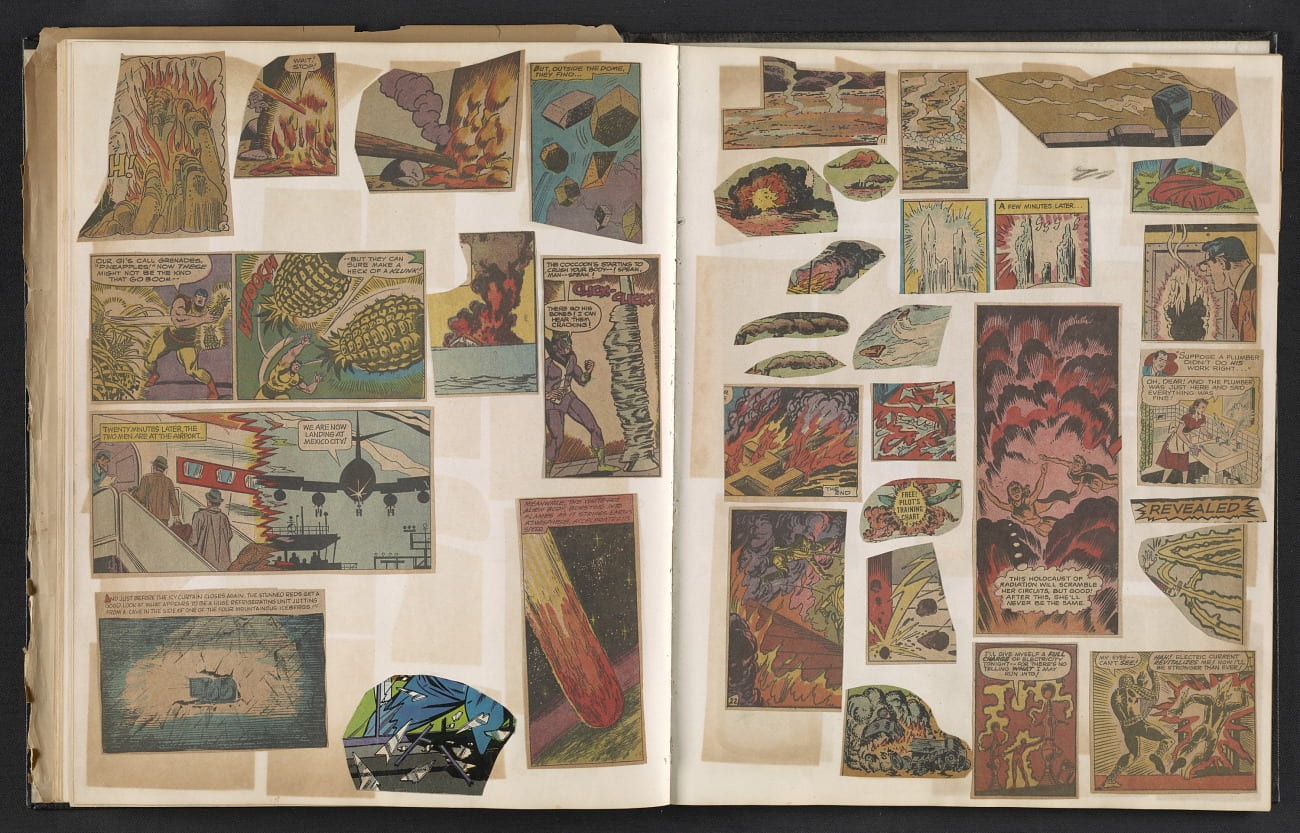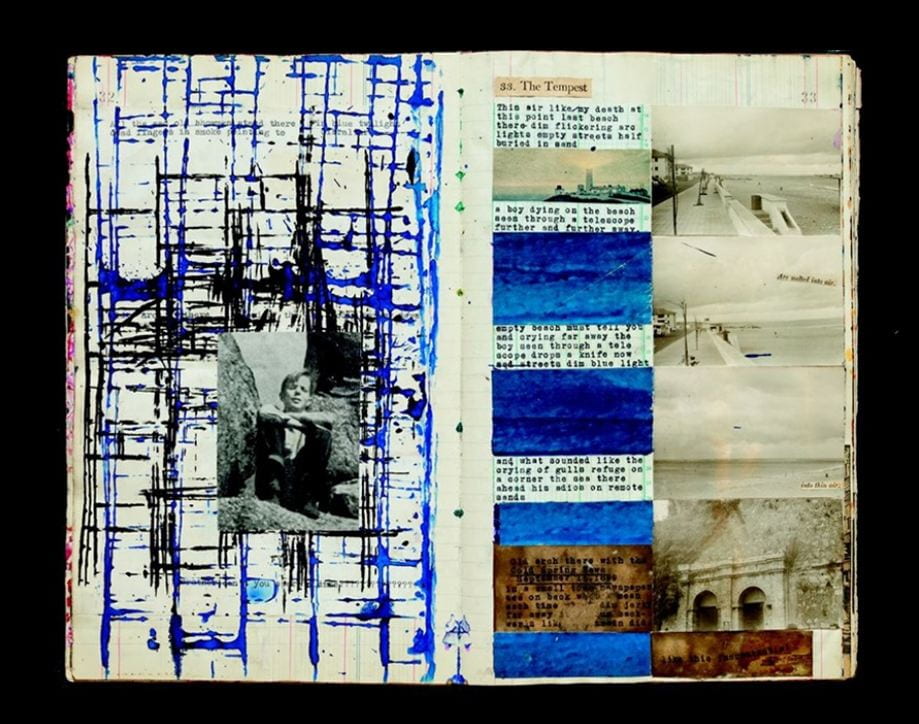Jean-Michel Wicker Novolino 2003-5
One of the most recent scrapbooks – or excerpts from such – to feature in this blog, Novolino is also one of the most enigmatic. There is little contextual information about it online, and not much about its artist, though this interview goes some way to evoking the artist’s practice. Like a number of other scrapbooks cited in this blog, Novolino featured in Paperwork: A Brief History of Artist’s Scrapbooks. The spread shown here usefully flags the overlap between scrapbook and sketchbook. And despite the prevalence of monochrome, it also comprises a range of materials.














